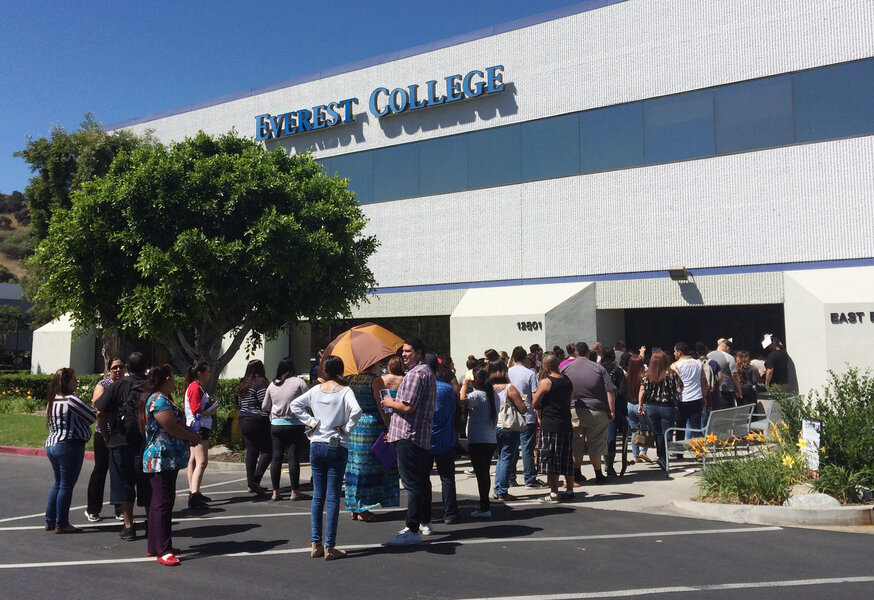When a for-profit college goes under, who should pay?
Loading...
| Washington
A government plan to wipe out loans for many of the students who attended the now-disgraced for-profit Corinthian Colleges raises serious questions about whether the White House or Congress should have done more to prevent the debacle.
Education Secretary Arne Duncan on Monday announced that the government would make it easier for former Corinthian students to erase their debt. About $3.6 billion in federal loans has been given to these students since 2010. That potentially puts the taxpayer on the hook for that amount, although officials say it's unlikely that every loan will qualify for relief.
At the very least, the government is looking at footing the bill for hundreds of millions of dollars in student debt in what has become a major consumer bailout. Some advocates say the government should have done more sooner to intervene, while others are questioning the latest approach.
"Students have been hurt, but the department is establishing a precedent that puts taxpayers on the hook for what acollege may have done," said Sen. Lamar Alexander, R-Tenn., who chairs the Senate Education Committee.
Alexander said one of the problems has been an inherent conflict of interest with having the Education Department provide loans and regulate colleges.
"If your car is a lemon you don't sue the bank that made the auto loan; you sue the car company," he said.
Corinthian Colleges was one of the largest for-profit schools when it nearly collapsed last year and became a symbol of fraud in the world of higher education and student loans. According to investigators, Corinthian schools charged exorbitant fees, lied about job prospects for its graduates and, in some cases, encouraged students to lie about their circumstances to get more federal aid.
In a plan orchestrated by the Department of Education, some of the Corinthian schools closed while others were sold before the chain filed for bankruptcy this spring. The biggest question has been what should happen to the debt incurred by students whose schools were sold. The law already provides for debt relief for students of schools that close, so long as they apply within 120 days.
The latest plan expands debt relief to students who attended a now-closed school as far back as a year ago. And it streamlines the process for students whose schools were sold but believe they were victims of fraud. The Education Department will soon appoint a "special master" to oversee much of the program, who will support students at other for-profit schools who feel they've been victimized.
"We will make this process as easy as possible for them, including by considering claims in groups wherever possible, and hold institutions accountable," Education Secretary Arne Duncan said in a statement.
The amount of debt relief could be staggering. Officials estimate that some 40,000 borrowers at the Heald College alone took on more than $540 million in loans that potentially qualify for debt relief. But the final amount could climb significantly when looking across all Corinthian Schools, which include Everest and WyoTech.
Former officials at Corinthian Colleges couldn't be immediately reached for comment. A former lawyer for the school said he no longer represents the chain of colleges since it went bankrupt.
In a blog post Monday, the Debt Collective said the Education Department plan didn't go far enough. The group said the plan would put in place "a bureaucratically tortured process designed to provide relief only to those who hear about it and can figure out how to navigate unnecessary red tape."







